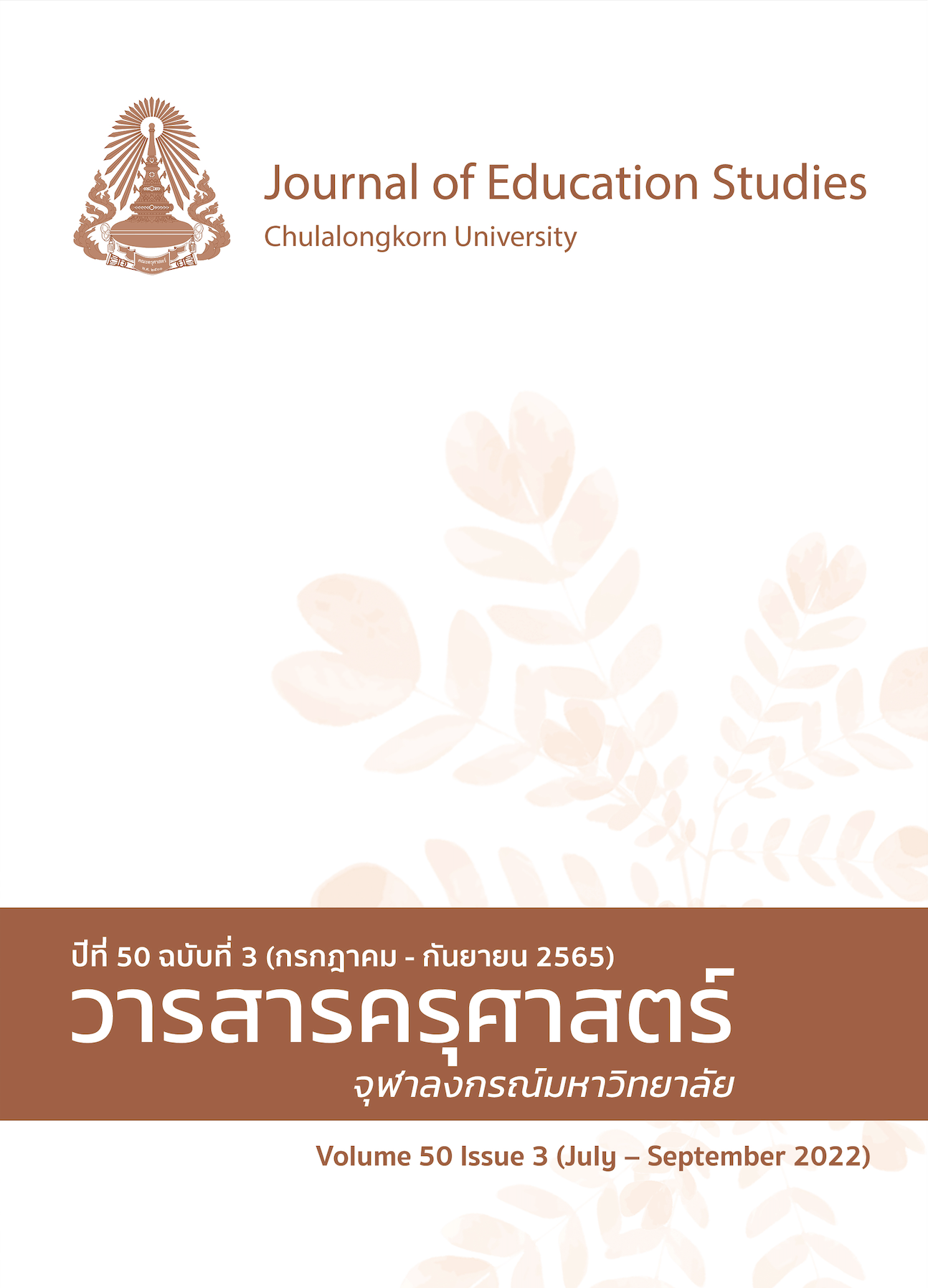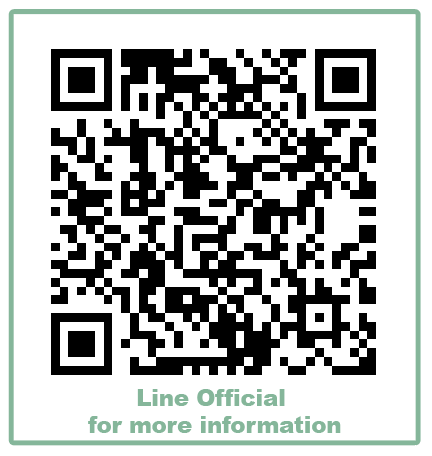การฝึกอบรมทางไกลสำหรับวิศวกรรมอัตโนมัติกับเทคนิคและการอาชีวศึกษา : ข้อเสนอรูปแบบใหม่ของการฝึกอบรม
DOI:
https://doi.org/10.14456/educu.2022.24คำสำคัญ:
อัตโนมัติ, รูปแบบการฝึกอบรมแบบเพิ่มพลัง, เกณฑ์การประเมินบทคัดย่อ
งานวิจัยนี้มีวัตถุประสงค์เพื่อพัฒนารูปแบบการฝึกอบรมออนไลน์ สำหรับนักศึกษาวิศวกรรมศาสตร์อัตโนมัติที่ทำงานสาขาที่ศึกษาในโรงงานอุตสาหกรรมของประเทศสิงคโปร์ ให้สามารถได้รับพัฒนาสมรรถนะวิชาชีพระหว่างการทำงานได้ การวิจัยใช้ระเบียบวิธีวิจัยกึ่งทดลอง แบ่งนักศึกษาที่ทำงานในสาขาวิศวกรรมอัตโนมัติ โดยวิธีสุ่มเลือกเป็นสองกลุ่ม คือ กลุ่มควบคุมและกลุ่มทดลอง กลุ่มละ 20 คน โดยมีการทดสอบก่อนและหลังของช่วงเวลาการทดลอง รูปแบบการฝึกอบรมออนไลน์ คึอ “Empower Training Model” โดยกลุ่มควบคุมจะได้รับการฝึกอบรมแบบการอบรมปกติ ส่วนกลุ่มทดลองใช้ระบบอบรมออนไลน์ ETM เกณฑ์การวัดประเมินทักษะและกระบวนการ ใช้แบบสอบถามของ American Association of Colleges and Universities สาระ ประกอบด้วย การแก้ปัญหา การคิดวิเคราะห์ ความคิดริเริ่มสร้างสรรค์ การตั้งคำถาม และการวิเคราะห์ผล สถิติที่ใช้ในการวิจัย คือ ค่าเฉลี่ย ส่วนเบี่ยงเบนมาตรฐานและ t-test รวมทั้ง การใช้โปรแกรมคอมพิวเตอร์วิเคราะห์ค่าทางสถิติ ผลการศึกษา พบว่า รูปแบบฝึกอบรมออนไลน์ ETM ช่วยทำให้ผลการเรียนรู้ของนักศึกษาพัฒนาอย่างมีประสิทธิภาพมากขึ้น
References
Accreditation Board for Engineering and Technology. (2018). Criteria for accrediting engineering technology programs.
ABET. https://www.abet.org/wp-content/uploads/2018/11/T001-19-20-ETAC-Criteria-11-24-18.pdf
Bal, M. (2014). Assessment of remote laboratory practices in engineering technology distance education. 2014 ASEE
International Forum Proceedings. https://doi.org/10.18260/1-2--17168
Barrows, H. S., & TamblynN, R. M. (1980). Problem-based learning: An approach to medical education. Springer.
Billett, S. (2009). Realising the educational worth of integrating work experiences in higher education. Studies in Higher
Education, 34(7), 827–843. https://doi.org/10.1080/03075070802706561
Choong, J. (2019). Education minister: Don’t see TVET as second-class or alternative choice. Malaysia. Malay Mail.
alternative-choice/1794548
Crawley, E. F., Malmqvist, J., Östlund, S., Brodeur, D. R., & Edström, K. (2014). Rethinking engineering education: The CDIO
approach. Springer Science & Business Media.
Healey, M. (2005). Linking research and teaching to benefit student learning. Journal of Geography in Higher Education,
(2), 183-201. https://doi.org/10.1080/03098260500130387
Hiebert, J., & Lefevre, P. (1986). Conceptual and procedural knowledge in mathematics: An introductory analysis. In James Hiebert (Ed.), Conceptual and Procedural Knowledge: The Case of Mathematics (pp. 113-131). Lawrence Erlbaum
Associates.
Knowles, M. (1975). Self-directed learning: A guide for learners and teachers. Follett.
Kolb D. (1984). Experiential learning: experience as the source of learning and development. Prentice Hall.
Kolb, A. Y., & Kolb, D. A. (2011) Experiential learning theory: A dynamic, holistic approach to management learning.
Armstrong: Management Learning, Education and Develop, 42-68.
https://www.researchgate.net/publication/267974468
Kolmos, A., (1996). Reflections on project work and problem-based learning. European Journal of Engineering Education,
(2), 141–148.
Mäkiö, J., Mäkiö-Marusik, E., & Yablochnikov, E. (2016). Task-centric holistic agile approach on teaching cyber physical
systems engineering. In Industrial Electronics Society, IECON 2016-42nd Annual Conference of the IEEE Industrial
Electronics Society. (pp. 6608–6614). IEEE Xplore. https://doi.org/10.1109/iecon.2016.7793806
Rhodes, T. L., & Finley, A. (2013). Using the VALUE rubrics for improvement of learning and authentic assessment.
Association of American Colleges and Universities.
Scanlon, E., Colwell, C., Cooper, M., & Di Paolo, T. (2004). Remote experiments, re-versioning and
re-thinking science learning. Computers & Education, 43(1–2), 153–163. https://doi.org/10.1016/j.compedu.2003.12.010
Tan, K. S., & Tang, J. (2016). New skills at work: Managing skills challenges in ASEAN-5. Singapore Management University.
Tyson, R. (2016). The didactics of vocational Bildung: How stories matter in VET research. Journal of Vocational Education
& Training, 68(3), 359–377. https://doi.org/10.1080/13636820.2016.1213762
United Nations Educational, Scientific and Cultural Organization. (2016). Strategy for technical and vocational education
and training (TVET) 2016-2021. United Nations Educational, Scientific and Cultural Organization.
Wiggins, G., & McTighe, J. (1998). Understanding by design. ASCD.
Downloads
เผยแพร่แล้ว
How to Cite
License

This work is licensed under a Creative Commons Attribution-NonCommercial-NoDerivatives 4.0 International License.



